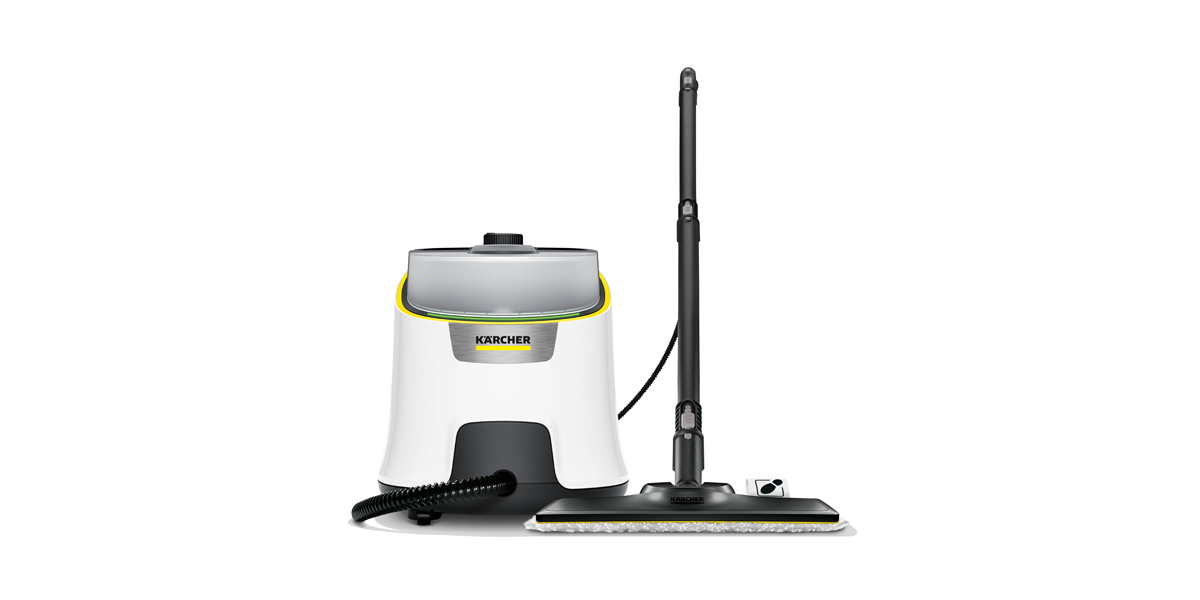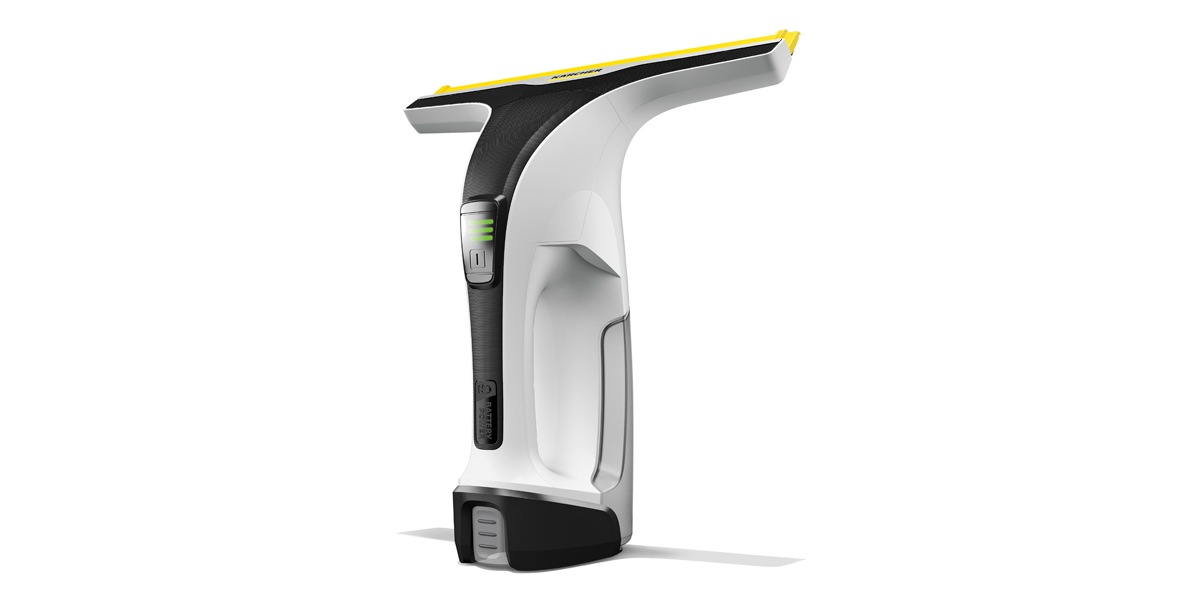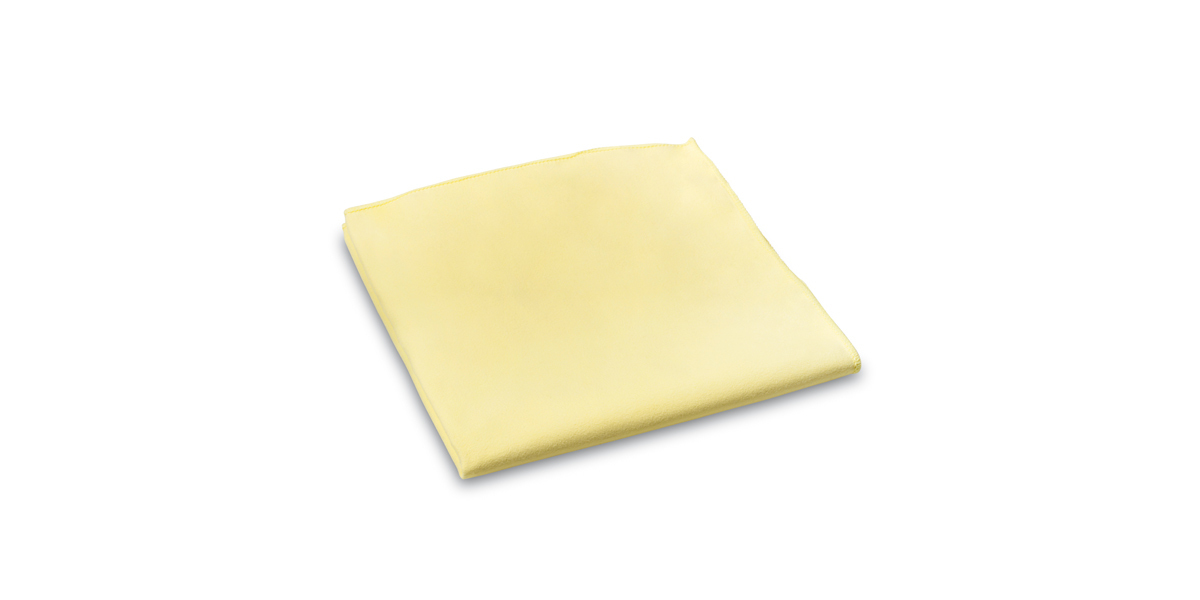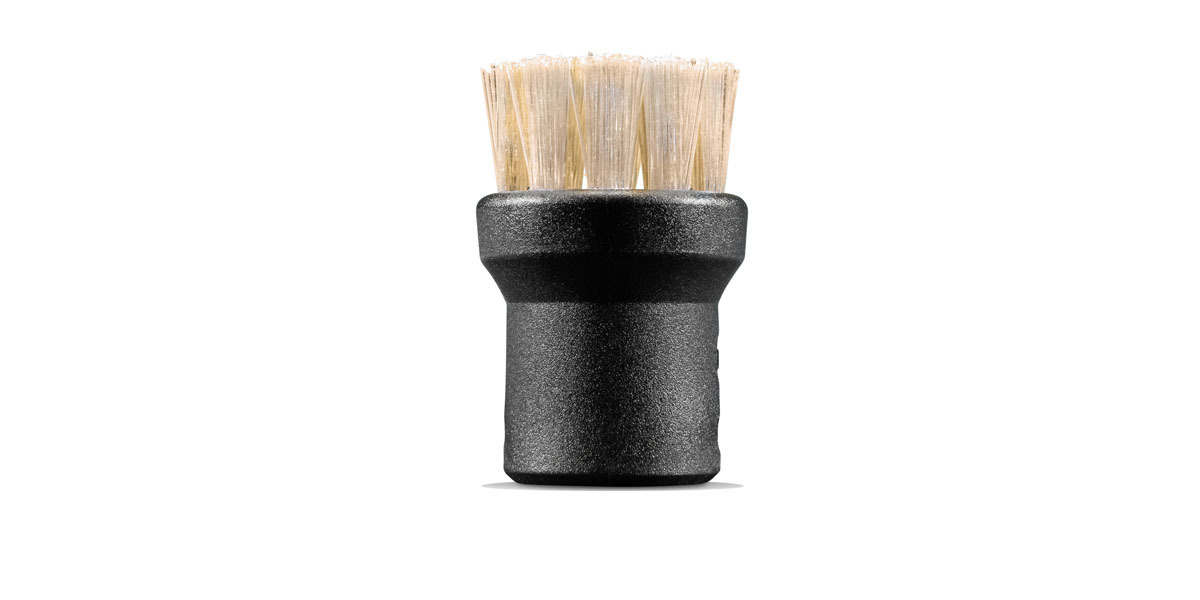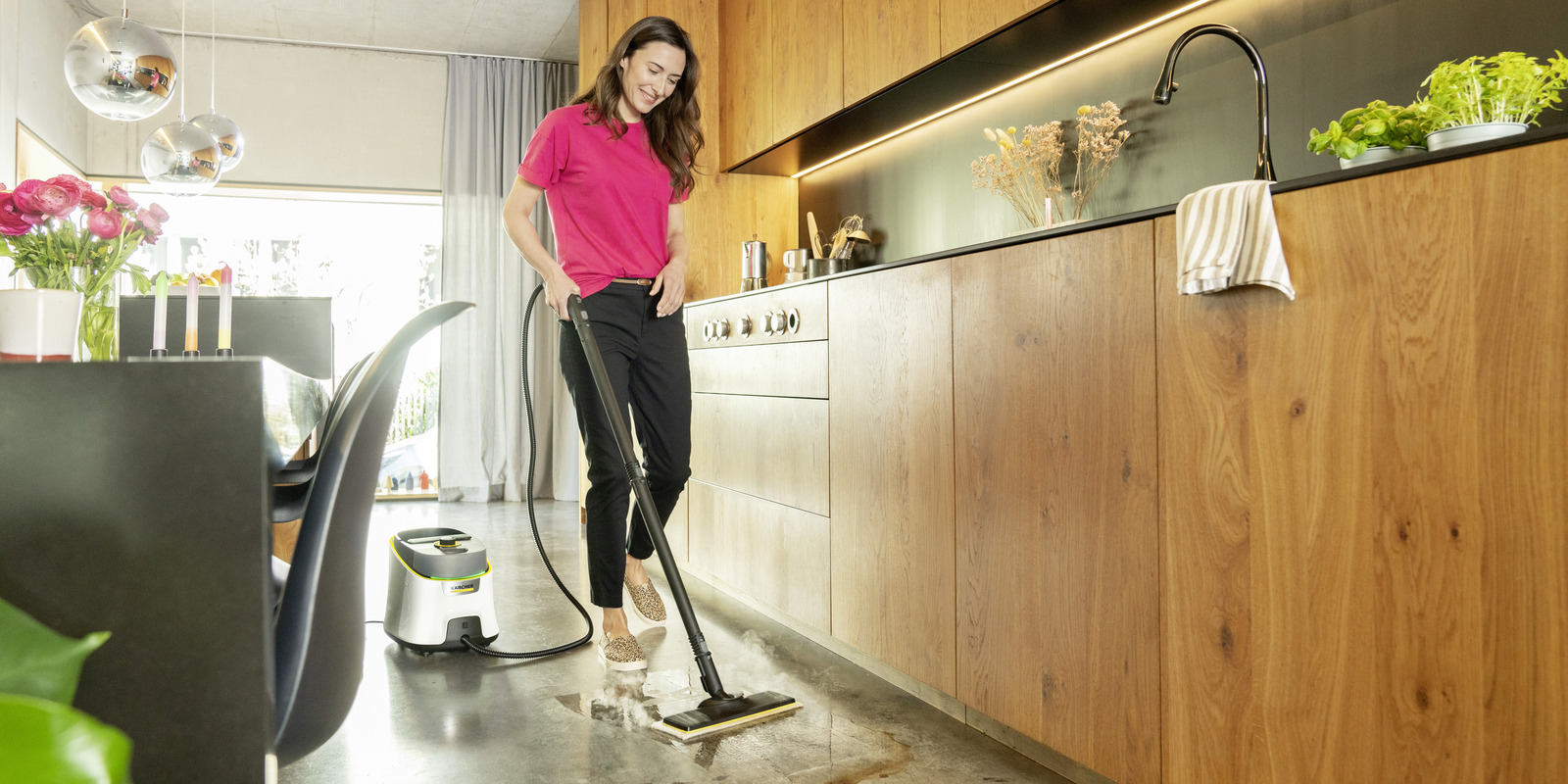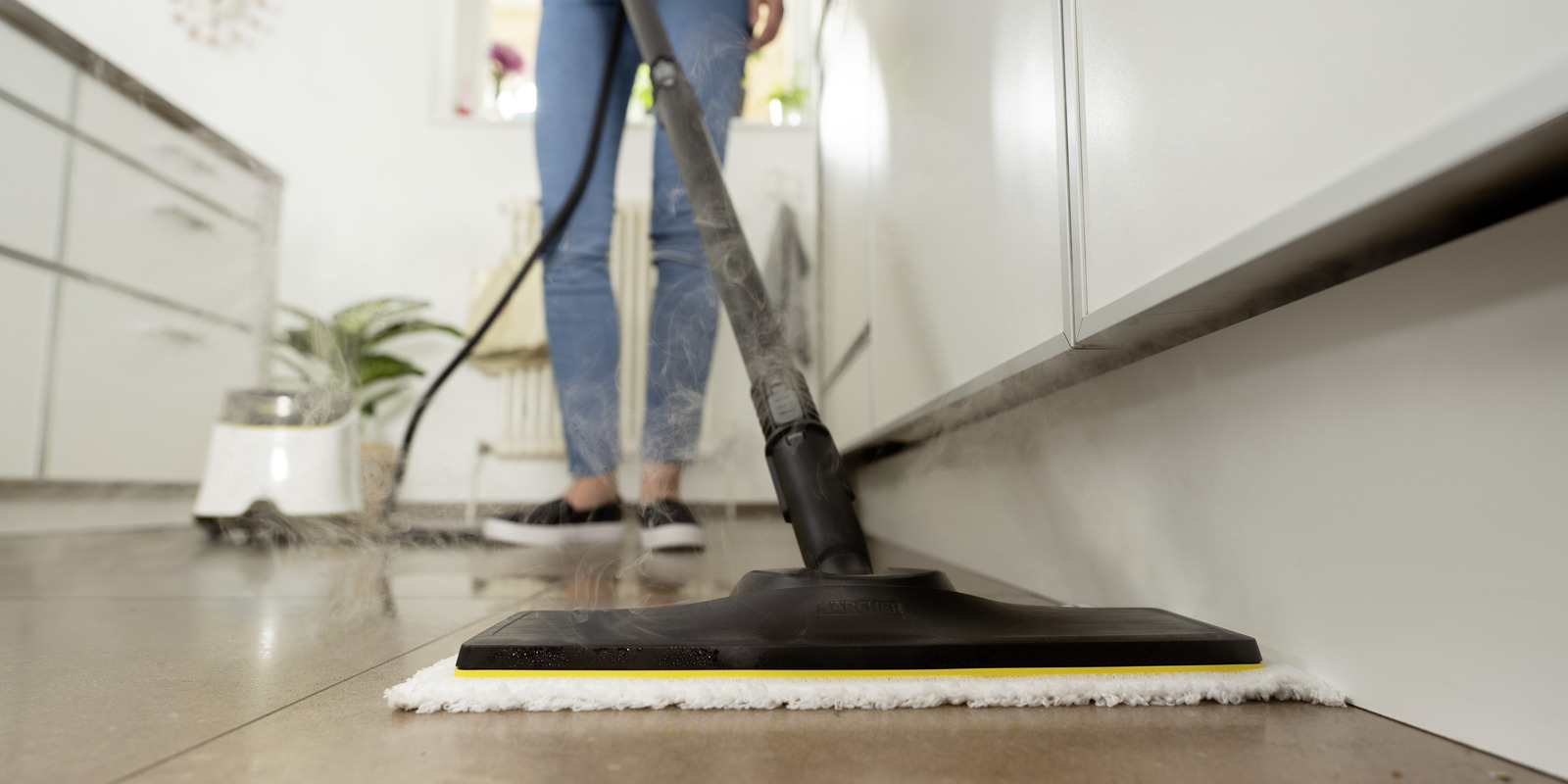Cleaning the oven: Top tips and household remedies
Grease and encrusted food residue in the oven, on the hob and on the exhaust hood can quickly spoil the pleasure of cooking and baking. The dirt is often stubborn and difficult to remove. These tips and devices will guarantee excellent cleaning.
Steam cleaning the oven
Don't put off cleaning your oven for too long. The longer the burnt-on food and grease stay in the oven, the harder they are to remove.
First, wipe away any loose and easy-to-remove food residue using a damp cloth. Next, remove any stubborn residue from the oven using a steam cleaner to prevent damage to the surface. To do this, attach the round brush or hand nozzle and clean the entire oven, including the door, using steam. The heat liquefies the encrusted dirt, making it easy to wipe off with a clean cloth. Stubborn burnt-on food can be removed using a commercially available stainless steel scouring pad: Place it over the round brush and rub on the affected area while steaming continuously until the dirt has liquefied. Alternatively use a power brush with which even stubborn dirt and encrustations are removed quickly and easily and without leaving any residue. The brush is particularly suitable for use on oven racks. When cleaning using the hand nozzle or round brush, we recommend going over the area with a microfibre cloth, which means that the loosened dirt is wiped off directly by the cloth. Soaking with washing-up liquid before using the steam cleaner also makes the dirt is easier to remove.
If you have a pyrolytic self-cleaning oven, scrubbing is a thing of the past. Here, temperatures of over 500 °C reduce grease and food residue to ash, which simply needs wiping out.
The best household remedy for cleaning the oven
If you would like to clean your oven with detergent, you can use commercially available chemical oven cleaners, also known as grill cleaners, which are available in the form of liquid, gel or cleaning foam. They are generally highly alkaline and contain additional grease-removing agents. Tried-and-tested household remedies offer a real alternative to chemical cleaners:
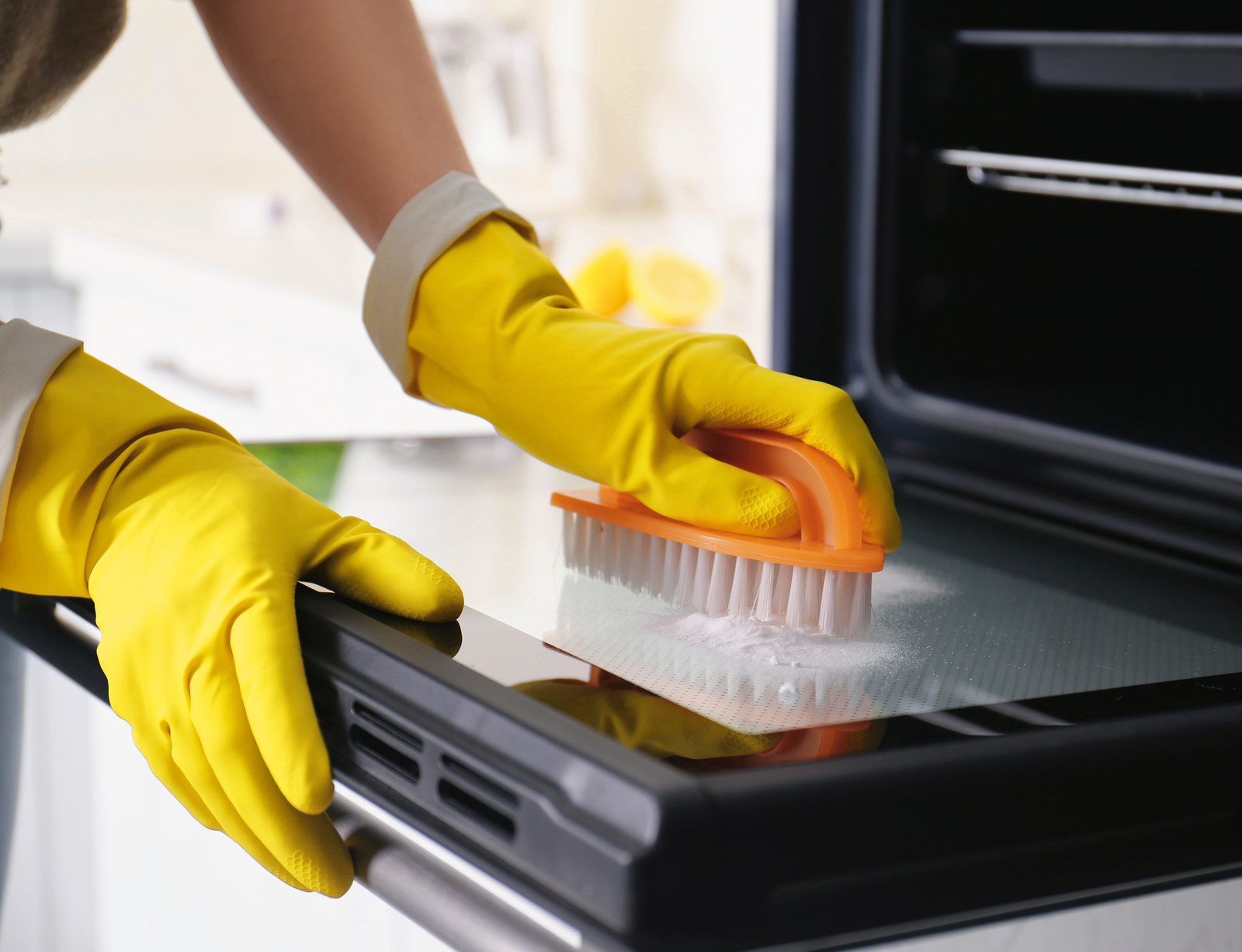
Bicarbonate of soda: This versatile household remedy is also a great help in removing significant dirt on the hob or in the oven. To do so, mix bicarbonate of soda powder with water in a 1:1 ratio and apply the paste to the burnt-on areas. Leave it to work for around 30 minutes. When loosening burnt-on food, the bicarbonate of soda first begins to foam, then gradually dries out. Finally, the dried powder simply needs to be removed from the hob or oven. If you don't have any bicarbonate of soda to hand, baking powder will do. It has the same effect.
Another household remedy that has proven its use is vinegar: You can use kitchen vinegar or vinegar essence. For light dirt, mix kitchen vinegar with some washing-up liquid and rub the mixture onto the affected area using a sponge. Leave it to work for a short time, then wipe the dirt residue off with a damp cloth. For stubborn dirt, fill a heatproof dish, such as a casserole dish, with water and add 2–3 tablespoons of vinegar essence. Then leave the dish in the oven for around 45 minutes at 150 °C. The resulting steam loosens the dirt. Leave the oven to cool down briefly, then wipe it all over with a damp cloth. Water with lemon juice can also be used instead of vinegar essence.
Salt: Burnt-on spots in the oven or on baking trays can also be removed using salt. Step 1: Dampen the bottom of the oven or the baking tray with a cloth. Step 2: Sprinkle enough salt over all the spots and burnt-on food so that they are covered in a white layer. Step 3: Heat the oven to 50 °C. Switch off the oven as soon as the salt turns brown. After it has cooled down, simply sweep the salt carefully out of the oven.
Cleaning the exhaust hood
An exhaust hood does a vital job in the kitchen: It extracts the vapours produced when cooking and frying, and absorbs the grease particles in the air. However, frequent cooking causes a sticky film of grease to settle on exhaust hoods themselves over time. This is particularly the case for stainless steel exhaust hoods. They are quick and easy to clean with a steam cleaner: Place the appropriate microfibre cleaning cloth over the hand nozzle. Continue to release steam and rub the surface of the exhaust hood with the microfibre cover until the heat dissolves the oil and fat deposits. If the film of grease has already been there for a while, it will certainly need continuous rubbing and pressure. If you have an exhaust hood made of grained stainless steel, make sure to follow the grain when cleaning. The grease will gradually accumulate in the cloth, meaning it should be changed midway though cleaning. You can polish the cleaned area with a microfibre cloth for a streak-free finish.
Alternatively, use an alkaline surface cleaner or water and washing-up liquid to clean your exhaust hood. If you have waited a little longer to clean the exhaust hood and the dirt is more difficult to remove, bicarbonate of soda has proven its worth as a household remedy: Mix water and bicarbonate of soda into a paste and apply this to the hood. Leave it to work for a short time and wipe off the surface again with water, then thoroughly dry the exhaust hood.
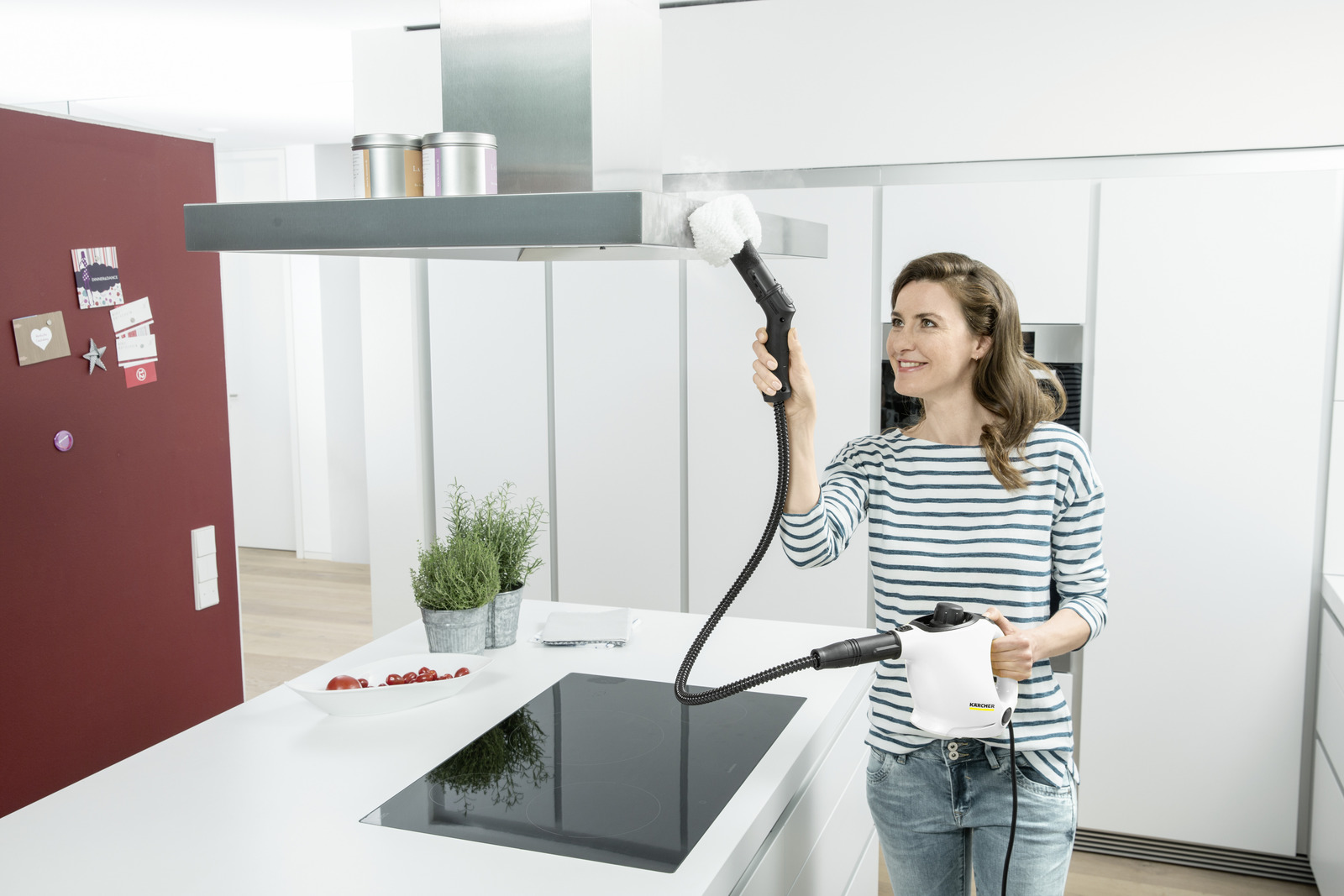
Tip: Cleaning the grease filter
If used a lot for cooking, it is advisable to clean the exhaust hood's grease filter regularly, every 6–8 weeks. This filter is often made of metal, which can simply be put in the dishwasher or cleaned in soapy water.
Moreover, there are also models with active carbon filters – a special filter required for exhaust hoods with recirculated-air operation, which filters odour particles out of cooking vapours. These filters should be replaced at regular intervals.
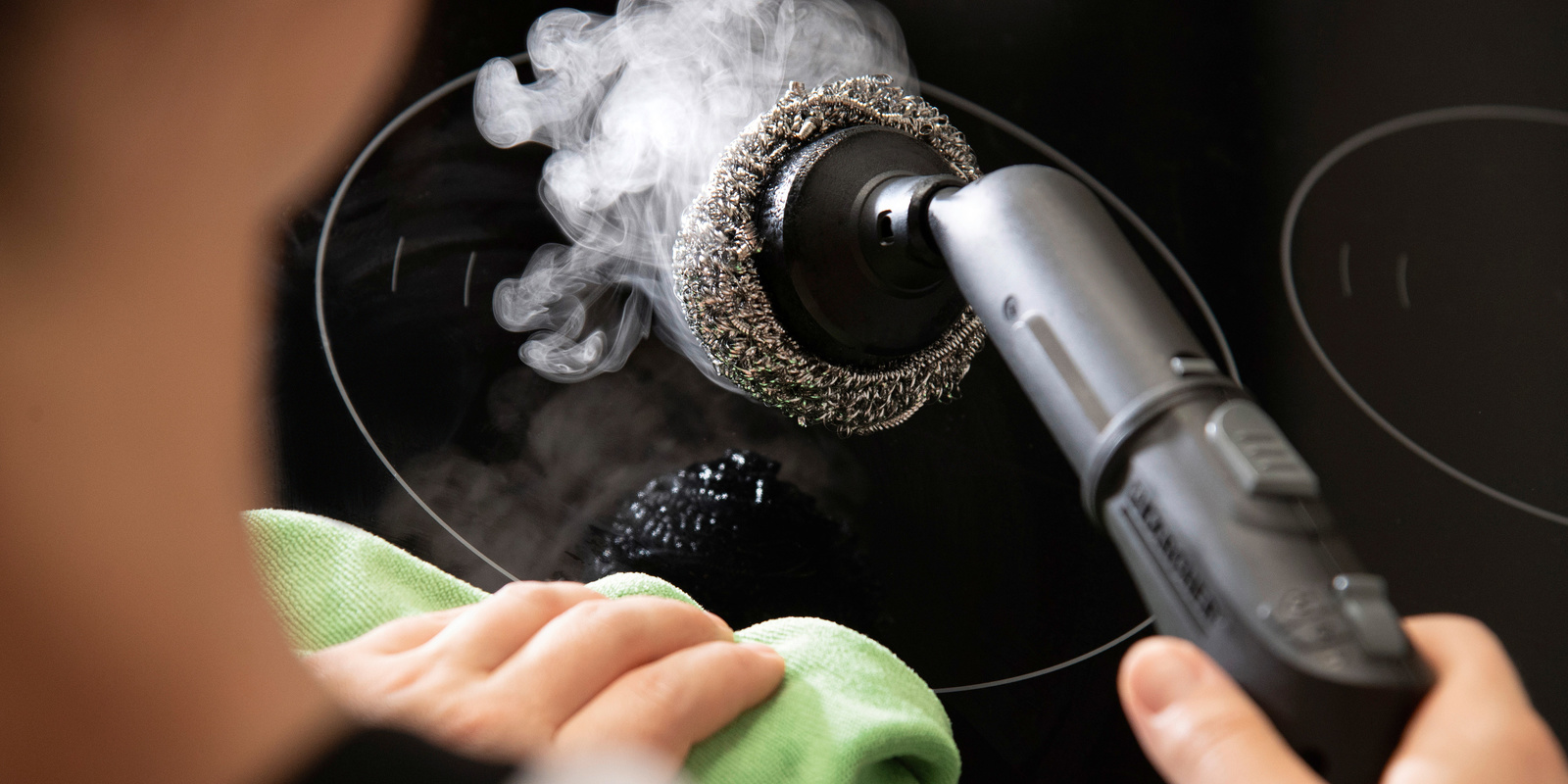

Cleaning the hob: Using steam to combat burnt-on food residue
We all know the feeling: Look away for a second and your pasta, sauce or milk boils over onto the kitchen hob. You're left with food residue burnt onto the hob, which can no longer be removed just with a damp cloth. Use the steam cleaner to remove burnt-on food residue and liquids quickly and easily: Place a commercially available stainless steel scouring pad on the steam cleaner's round brush and clean the whole hob area while steaming the area continuously. The steam forms a lubricating layer of air under the scouring pad to prevent scratches on the glass surface.
Joints and edges can be cleaned without the scouring pad by using the detail nozzle with a round brush attached to it. Make sure you use a brush with plastic bristles as these will not scratch the hob. However, steam should not be applied directly to silicone joints; instead, these just need to be wiped carefully. Then dry the surface with a cloth. You can also use this process to clean baking trays and grill racks.
Residue from melted plastic or coarse burnt-on food can be carefully scraped off the surface using a special scraper for ceramic hobs at the flattest angle possible.
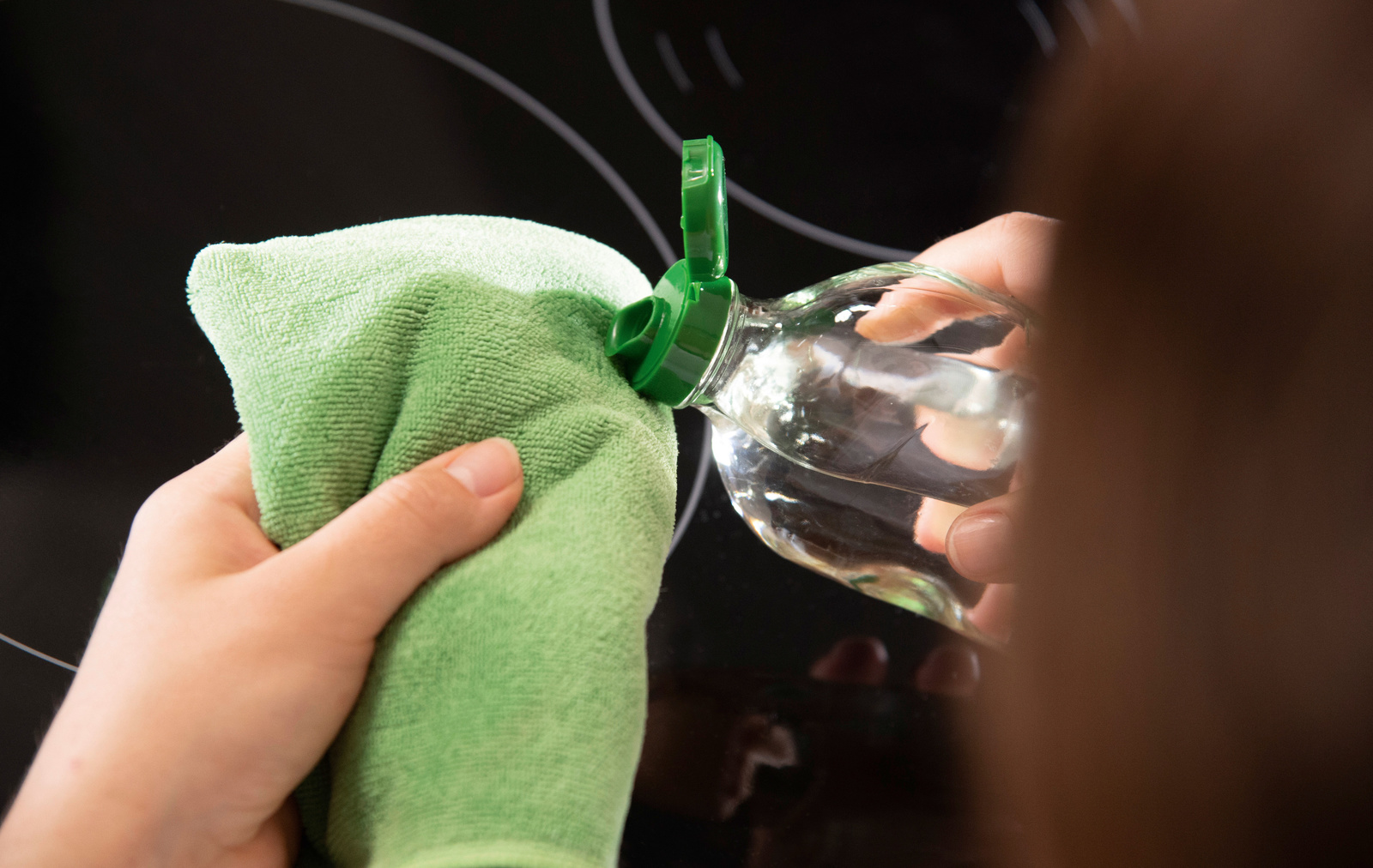
Cleaning the hob with household remedies
Tried-and-tested household remedies are well suited to cleaning hobs as an alternative to commercially available oven cleaners or special detergent for ceramic hobs: Add 2 teaspoons of baking powder to 100 ml of lukewarm water. Apply the resulting viscous solution to the hob surface, allow to work for a while, then polish with a clean microfibre cloth. A cloth dipped in vinegar essence and placed on the dirt or a mixture of vinegar and baking powder worked in with a cloth can also be helpful here.
To prevent hard residues from forming in the first place, give the surface of the hob a quick clean after every use, always removing residue immediately. Usually, wiping over the area with a damp cloth and then drying it is enough. Apply some washing-up liquid to the cloth and wipe over everything to remove grease. Make sure that the hob has cooled down completely before cleaning.
As with all flat surfaces, it is also possible to remove liquid gently from the ceramic hob by suction using the Window Vac when cleaning the kitchen.

